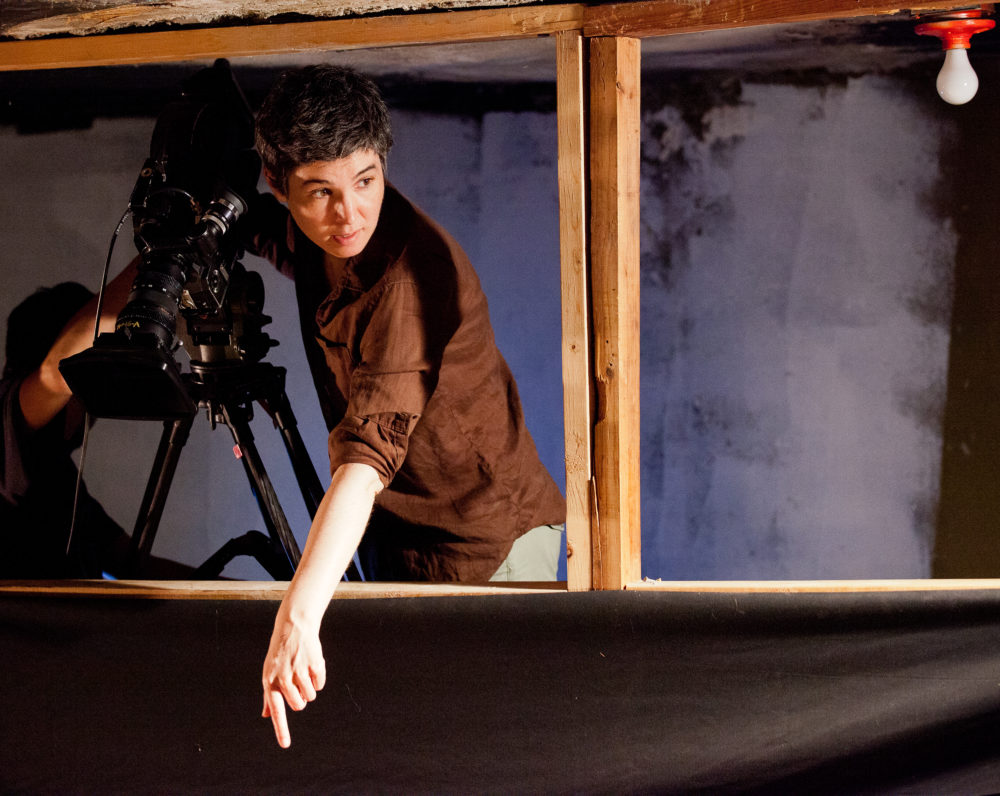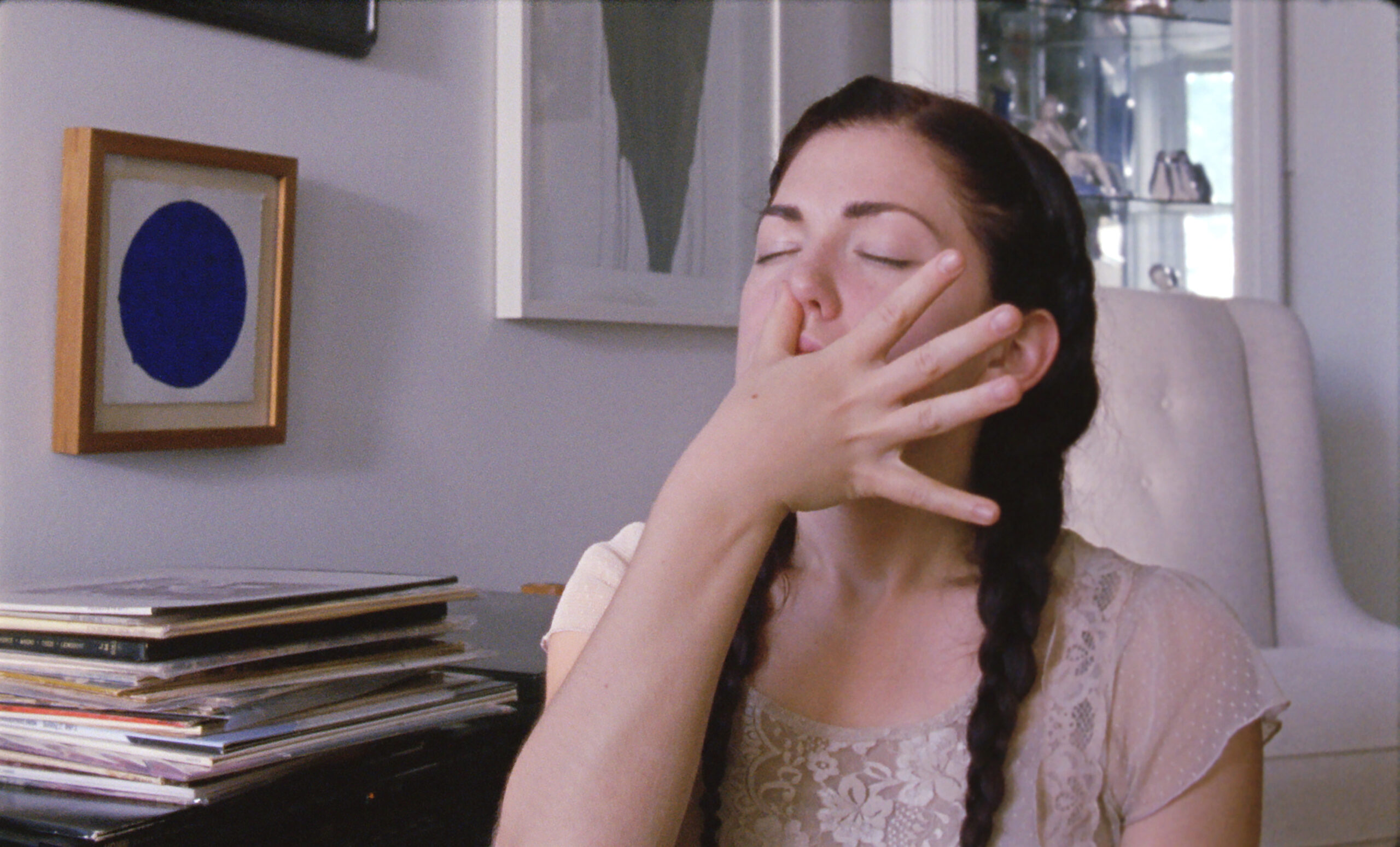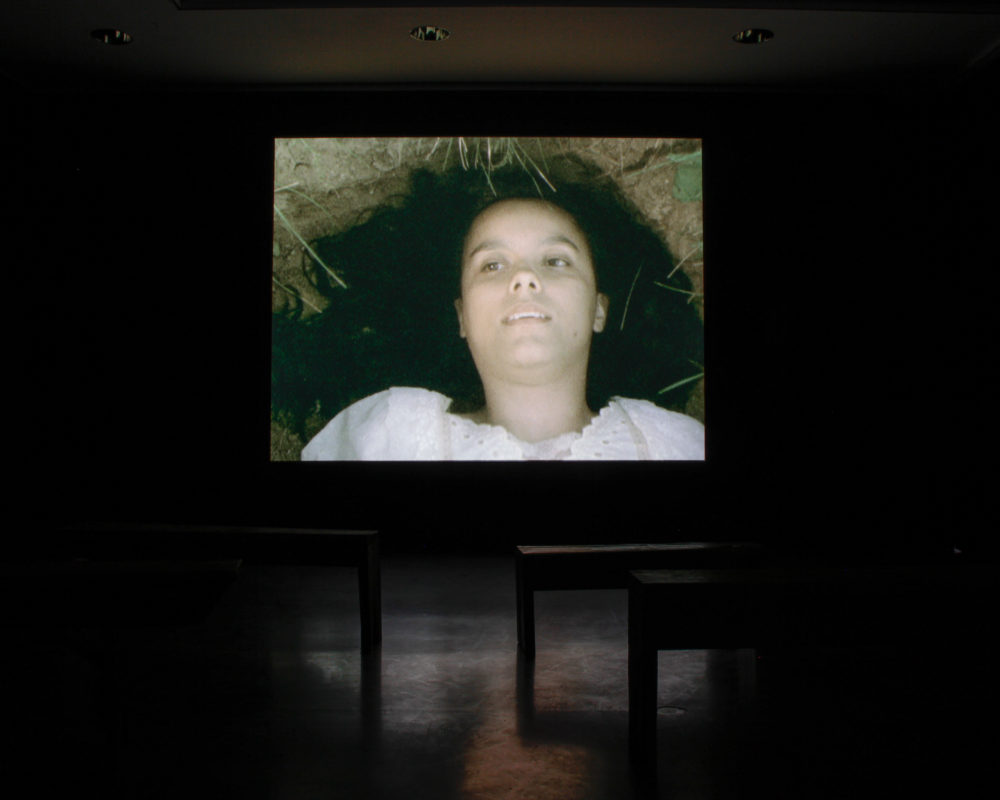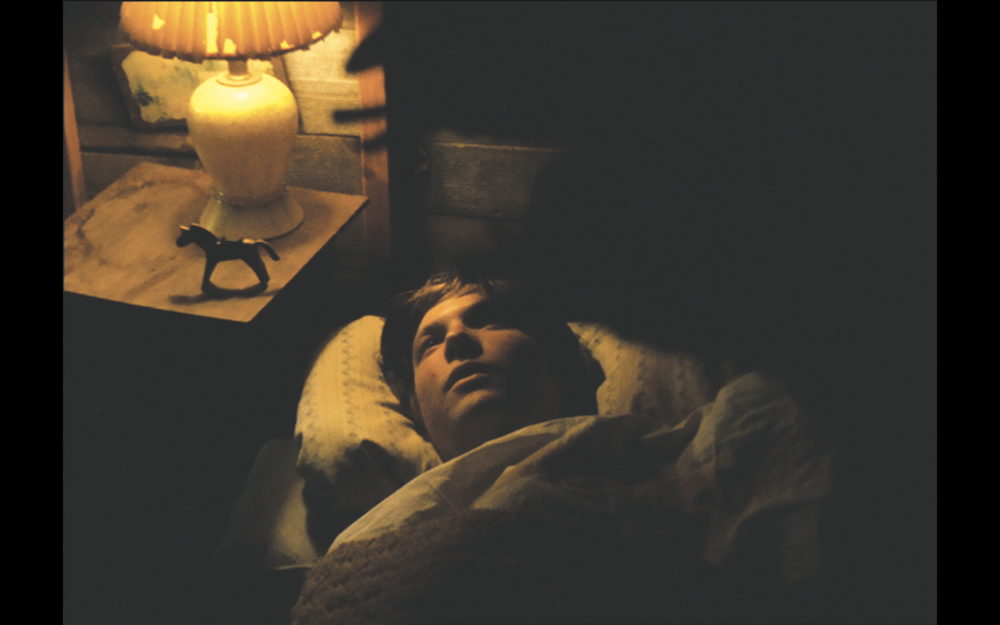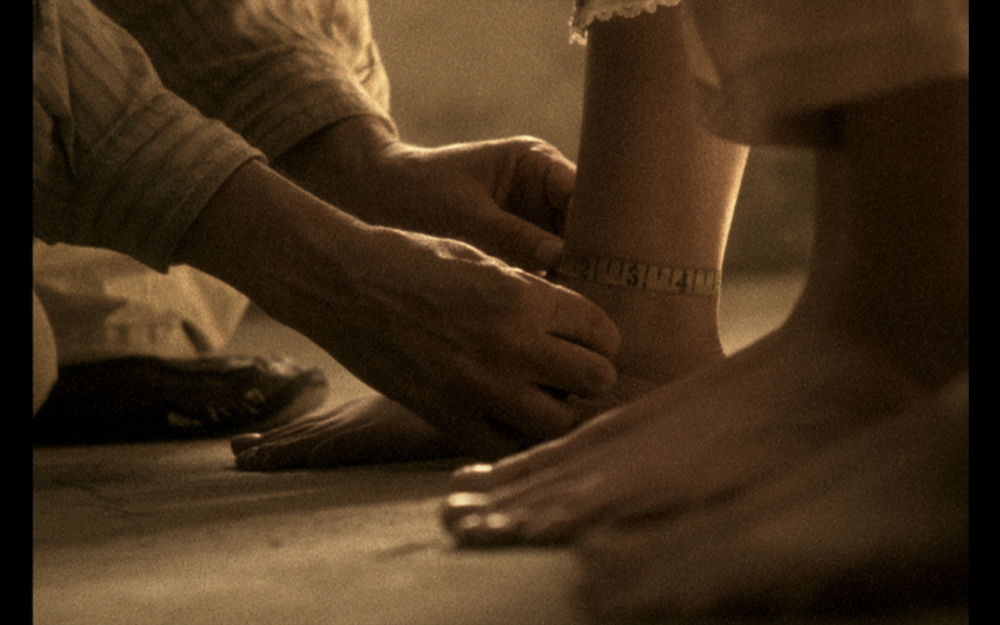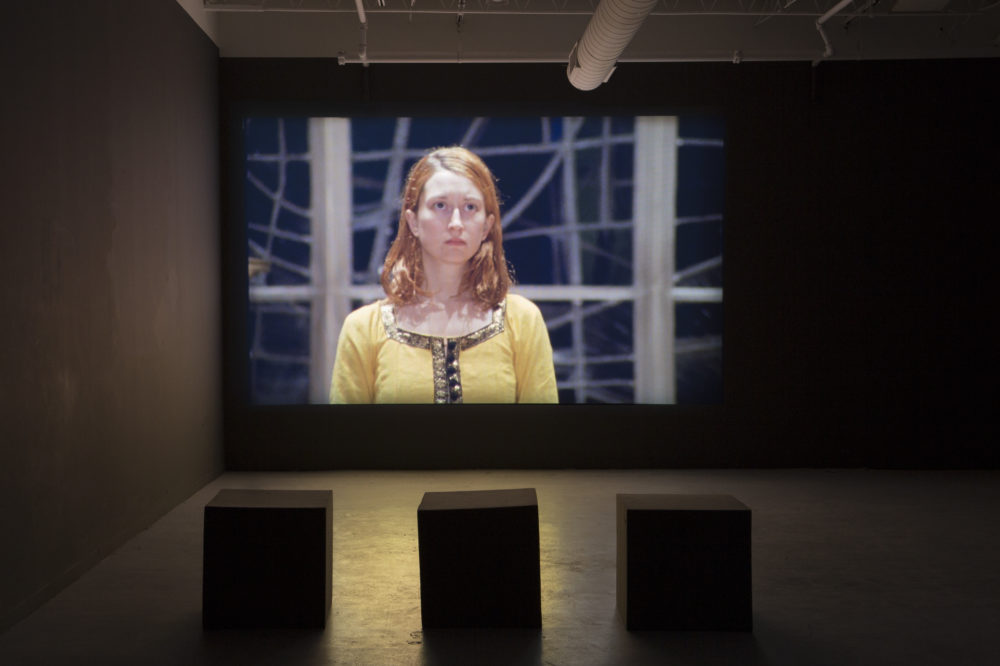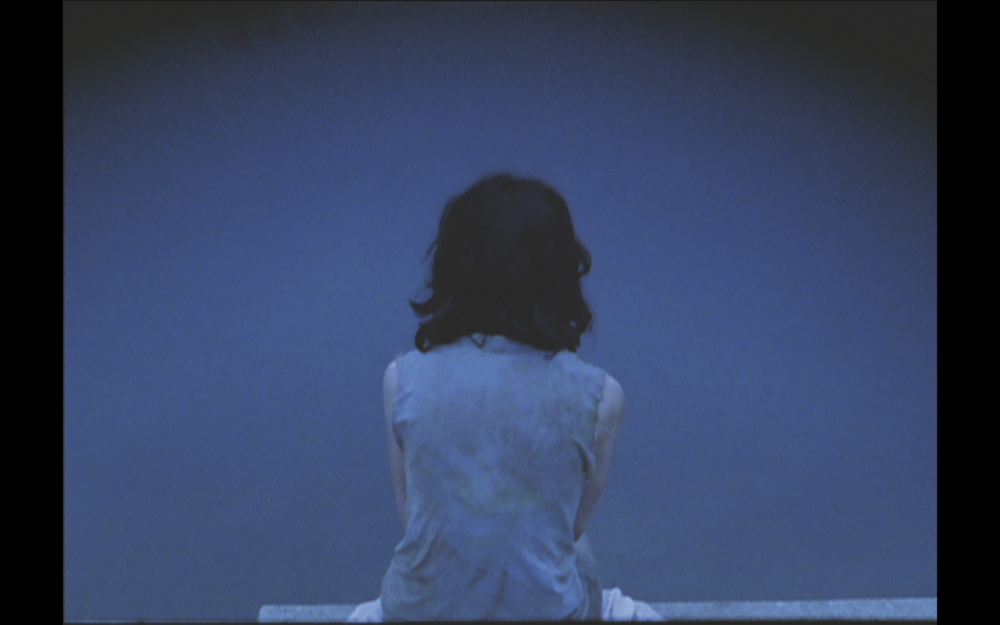A: What are the influences behind the lush, gothic landscapes in your films? Can you speak about the importance of place or location in your work?
MB: The easy answer is growing up in the American south. Sounds cliché, but there’s something to it. Southern Gothic is an actual thing, and I’m sure I got my sense of ‘vegetable darkness’ from childhood in places and cultures steeped in dark (semi-hidden) histories; in the verdant landscapes, and really just all of the expressive, lyrical weirdness that abounds in both people and place in the South. For all the flash of urban American culture, our violent colonial history is of course not remotely resolved, and it is differently visible in smaller cities and towns, often quietly ever-present. In a way, the tense, dark pull of the Gothic keeps the troubling feelings bubbling on-alert, a reminder that history and the present live together, intertwining.
Specific settings in my work are sites for fictional histories that have real-world resonances. These places hold traces of narrative on their surfaces. The details of clothing, objects, and decor can imply so many elements of culture and identity (objects have an emotional life too). My Prairie Gothic films/installations SONGS FROM THE SHED, SHOALS, and WAKING THINGS all have a heightened materiality of place. My Sigur Ros video VARDELDUR takes it further, where the setting is a site of implied trauma, and the fractured figure you find there contains an embattled interior that it’s trying to work out.
This is also related to my adventure in portraiture, which takes a fresh, new turn in my current project THE LATEST SUN IS SINKING FAST, where situations are uncanny, yet sneakily mundane, in a contemporary setting. This new project’s been building in intimacy, over years, and it has some nervy surprises inside its familiar, yet speculative fiction.
A: Unlike most of your previous work, your recent project The Last Sun is Sinking Fast is a feature-length production. Can you talk a little about this transition?
MB: I wanted to make something expansive and epic, that has the weight of real time and real relationships moving through it, but I didn’t just want to simply make a feature film.
I get commissions, grants, a bit of funding here and there, and have summers off due to full-time teaching, so I knew I’d need to construct it gradually over time.
This accumulation of material and parts strategy also allows us to embrace the budgetary and schedule realities. We are now 7 years into making The Latest Sun is Sinking Fast, and have a on-going pattern of shooting, editing and generative rehearsals. People age in real time, so every few years, I check back in with the 3 performers (Bryan Saner, Sarah Stambaugh, and Matthew Goulish) for generative rehearsals. What we make out of those is a combo of prompts from the last round of editing and events in the 3 performers’ lives and family histories. From these creative constraints we’ve built something quite delicate and unnerving, it’s lyrical and funny, and about being alone together.
The nuts and bolts of making Latest Sun are dynamic too, as it’s made to work in different modes — to be flexible to show in both art spaces and in cinemas. Each new section we make becomes new material that gets shaped into the next show site-specifically. Each of these iterations is stand-alone; together they accumulate intentionally into a constellation of parts. You don’t need to see everything, as each one is edited and designed experientially for the space its shown in. So far I’ve shown it as a single-channel installation, a duo-channel installation, a split-screen short film, and a 4-channel installation, at venues like the New Museum New York, the Museum of Contemporary Art Chicago, and the Hyde Park Art Center.
Right now I’m working on 2 new sections – a linear long-film; as well as a new, multi-channel installation that I hope to mount in a large space or a few spaces in a building. Right now, after 7 years of shooting and editing, there is more material than ever to work with, so the sense of time passing is palpable – just like in real life, we return to these characters after a few years, and unexpected things in their life and with each other, have changed, and our assumptions about who they are are forced to shift.
A: How do you think your work has changed since 2008 and where do you see it going from here?
MB: One continuing thread is I think I’ve always been thinking about human connection, isolation, and what humanism can be now (or if the delusion of its ideal is now done and something new can take its place). Ten years ago, I was making moving image work that was historical fiction or fantasy, with no talking, and now the genre play has moved into abstracted and slow-burning melodrama with Creature Companion, and an epic-of-the-ordinary, with The Latest Sun is Sinking Fast, that brings in another kind of performance -cascades of language in singing and monologuing.
Since I got the award, I’ve delved into some unique qualities offered through installation – viewers’ psychology of navigating art spaces, and viewer agency – the pathways of random access points into the gallery, and the voyeurism of people watching people watch media. These art architectures and bodily performances now inform how I put together my video-sound material and design an installation.

